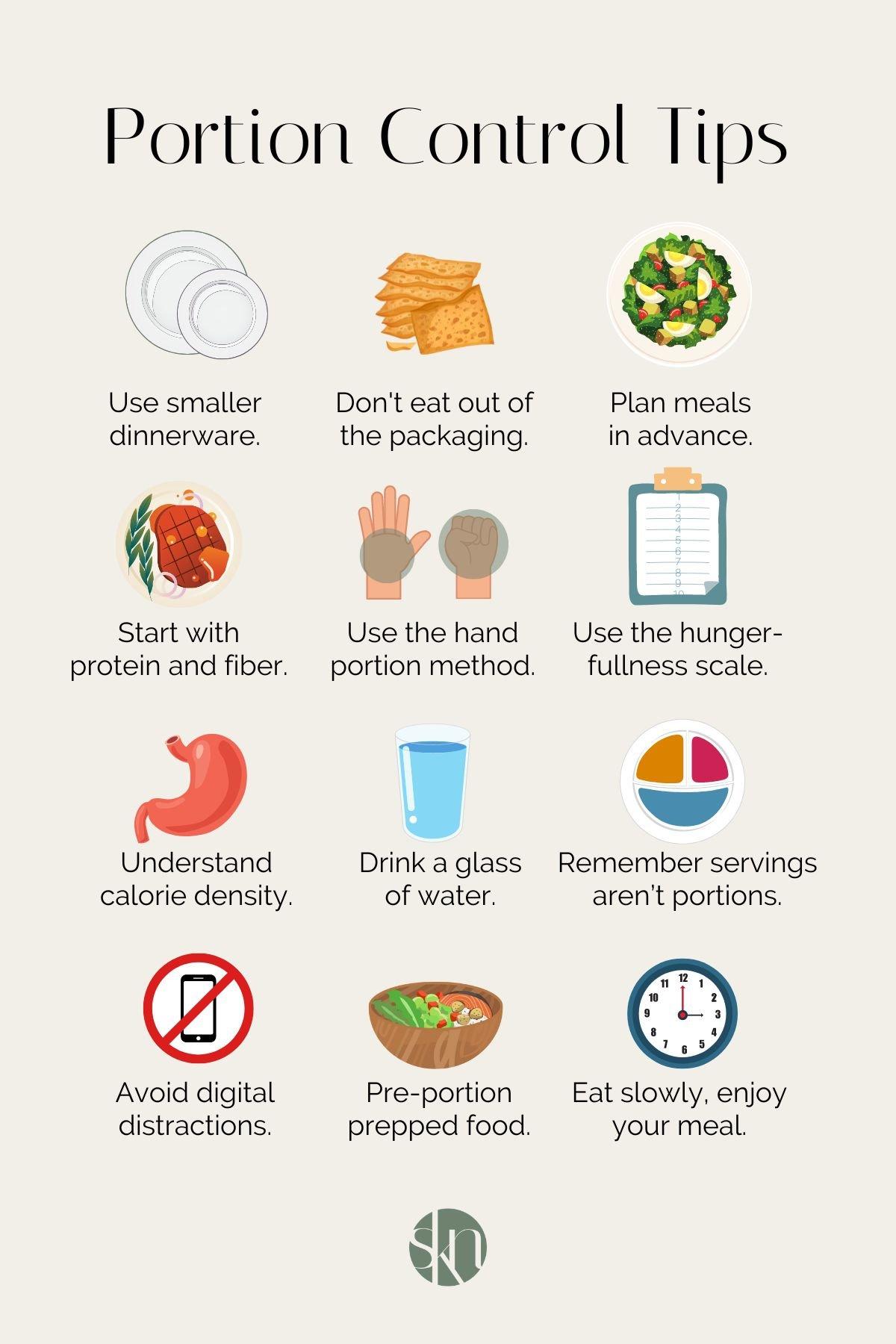In a world where culinary delights tempt us at every corner, mastering the art of portion control has become more than just a dietary choice—it’s a gateway to balanced living. Imagine savoring your favorite meals without the guilt, knowing that each bite is perfectly aligned with your health goals. “” is here to transform the way you think about food, offering practical insights and creative strategies to help you enjoy your meals to the fullest. Whether you’re a seasoned chef or a kitchen novice, this guide will equip you with the tools to craft delicious, satisfying meals that nourish your body and soul. Embark on this journey to discover how portion control can elevate your meal planning, turning every dish into a harmonious blend of taste and wellness.
Mastering the Art of Balanced Portions
Achieving a harmonious balance in your meals begins with understanding the essence of portion control. This practice is not just about cutting back; it’s about ensuring that each meal is nutritionally complete and satisfying. Imagine your plate as a canvas, with each food group playing a pivotal role in crafting a masterpiece. A typical balanced meal might consist of:
- Proteins: Lean meats, beans, or tofu taking up a quarter of your plate.
- Carbohydrates: Whole grains or starchy vegetables occupying another quarter.
- Vegetables: Vibrant greens and colorful veggies filling up the remaining half.
By visually dividing your plate and thoughtfully selecting your ingredients, you create meals that are both nourishing and fulfilling. Remember, the art lies not in restriction, but in the thoughtful orchestration of flavors and nutrients. Allow your taste buds to explore the delightful symphony of balanced portions, and watch as your meal planning transforms into a seamless culinary experience.

Understanding Nutritional Needs for Optimal Health
Achieving optimal health begins with a deep understanding of your body’s unique nutritional requirements. It’s not just about consuming a variety of foods but ensuring that your meals are proportioned to provide the right balance of nutrients. Portion control plays a crucial role in this process, helping to prevent overconsumption and maintain a healthy weight. Here are some essential considerations to keep in mind:
- Macronutrient Balance: Ensure your meals have a healthy mix of carbohydrates, proteins, and fats. Each macronutrient serves a unique purpose, from providing energy to supporting cell repair.
- Vitamins and Minerals: Incorporate a variety of fruits and vegetables to meet your daily micronutrient needs. These are vital for immune function, bone health, and energy production.
- Hydration: Don’t underestimate the power of water. Adequate hydration is key for digestion, nutrient absorption, and overall bodily functions.
By paying attention to these elements and adjusting portion sizes accordingly, you can create a meal plan that supports your health goals without sacrificing flavor or satisfaction. Remember, the journey to optimal health is as much about moderation as it is about selection.

Practical Tips for Measuring and Managing Portions
When it comes to mastering portion control, a few practical strategies can make a significant difference in your meal planning. Begin by using smaller plates and bowls. This simple change can trick your mind into feeling satisfied with less food, leveraging the optical illusion of a full plate. It’s a subtle shift, yet incredibly effective in managing portion sizes.
- Measure with your hands: Use your hand as a guide — a fist for carbs, a palm for proteins, and a thumb for fats. This personalizes portion sizes without the need for scales or measuring cups.
- Pre-portion snacks: Instead of eating straight from the package, divide snacks into single servings to avoid mindless munching.
- Mindful eating: Slow down and savor each bite. This practice not only enhances the eating experience but also allows your body time to signal fullness.
Incorporating these techniques into your daily routine can help maintain a balanced diet and prevent overeating. By paying attention to these small details, you’ll gain greater control over your nutrition without sacrificing satisfaction.

Building a Sustainable Meal Plan for Long-Term Success
Crafting a meal plan that stands the test of time involves more than just choosing the right foods; it requires a keen understanding of portion control. This pivotal aspect ensures you enjoy a balanced diet without overindulgence. Portion control helps maintain a healthy weight, supports digestion, and can even improve your relationship with food. Here are some key strategies to incorporate:
- Visual Cues: Use your hand as a guide. For example, a serving of protein should be roughly the size of your palm, while a serving of vegetables can be as much as your open hand.
- Mindful Eating: Slow down and savor each bite. This not only enhances your meal experience but also helps you recognize when you’re truly satisfied.
- Pre-portioned Containers: Invest in containers that guide portion sizes, making meal prep a breeze and preventing overeating.
By integrating these practices into your meal planning routine, you pave the way for a sustainable and enjoyable approach to eating that aligns with your long-term health goals.
In Summary
As we conclude this culinary journey through “,” it’s clear that the art of balancing nourishment and satisfaction is both a science and an art. By mastering portion control, you’re not just filling your plate with food; you’re embracing a mindful approach to eating that celebrates health, well-being, and sustainability. Remember, it’s not about restriction but about finding harmony in your meals, allowing you to enjoy each bite with intention and gratitude. As you step away from this guide, may your meals be a testament to balance and delight, nourishing both body and soul. Happy planning and even happier eating!

